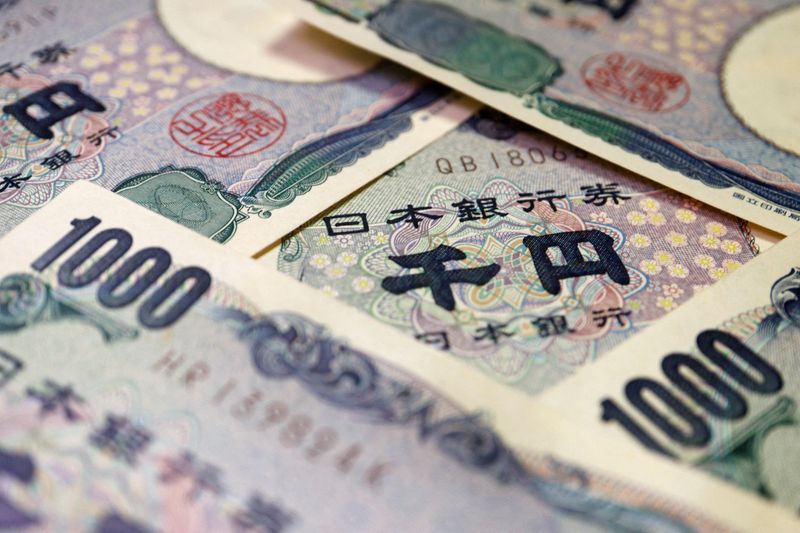By Kevin Buckland
TOKYO (Reuters) -The Australian dollar rose to its highest level this year on Tuesday as the central bank reiterated its determination to tame stubborn inflation, while the yuan climbed to a 16-month peak after fresh stimulus steps from China.
The Reserve Bank of Australia kept interest rates steady as widely expected, but traders hoping for hints on when a cut might be coming were disappointed as the central bank stressed it “remains resolute in its determination to return inflation to target,” and signalled further hikes remain an option.
“The RBA’s decision today amounts to another hawkish hold, which fits our view that it’s still too early for a dovish pivot,” said Tony Sycamore, an analyst at IG. “However a shift can occur very quickly … and we think that the possibility of a rate cut in December is now underpriced.”
Also sensitive to the outlook for China’s economy, the Aussie received some additional support from stimulus measures announced by the People’s Bank of China.
It climbed as much as 0.46% to $0.68695, its strongest level since Dec. 28. It then pared gains to $0.68435 as of 0540 GMT after RBA Governor Michele Bullock said a hike wasn’t explicitly discussed at the meeting.
China’s fresh stimulus – including a planned 50 basis point cut to banks’ reserve requirements, the signalling of potentially more easing in lending rates as well as property market support measures – helped boost the yuan.
Although the yuan initially weakened in offshore trading after the announcement of the rate cuts, it then climbed steadily to be up as much as 0.38% at 7.0310 per dollar as the focus shifted to the potential boost to growth.
“China needs a lower-rate environment to boost confidence,” said Gary Ng, senior economist at Natixis. “With a more dovish Fed, China may be more willing to start a new round of laxer policy cycles.”
The yen eased 0.36% to 144.12 per dollar after Bank of Japan Governor Kazuo Ueda reiterated in a speech on Tuesday that the central bank can “afford to spend time” scrutinizing developments in markets and overseas economies before tightening policy further.
The euro attempted to find its feet following a nearly 0.5% tumble overnight as weak business activity surveys pointed to additional rate cuts.
It was little changed at $1.1117. A survey compiled by S&P Global showed euro zone business activity sharply contracted this month as the bloc’s dominant services industry flat-lined, while a downturn in manufacturing accelerated.
Sterling edged to a fresh 2-1/2-year peak with the Bank of England last week striking a much less dovish posture than the Federal Reserve or European Central Bank. It rose 0.09% to $1.3360, and earlier reached $1.3366 for the first time since March 2022.
The BoE kept rates unchanged last Thursday, with its governor saying the central bank had to be “careful not to cut too fast or by too much”.

